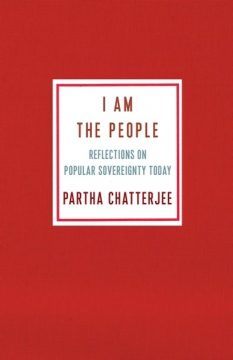 Rudrangshu Mukherjee reviews Partha K. Chatterjee’s I Am The People, in The India Forum:
Rudrangshu Mukherjee reviews Partha K. Chatterjee’s I Am The People, in The India Forum:
Populism as an instrument of political practice was first witnessed in India under the prime ministership of Indira Gandhi. The practice grew more common, cutting across political parties, when after the Emergency the Congress began to lose its popularity especially at the state-level and then in the 1990s at the national level. Chatterjee delineates two levels at which populism works — the nation state and the people-nation. The formation of the latter, he says, has a long history which is written about mostly in the regional languages. The federal structure of the Indian Constitution creates space for this dual practice of populism. The characteristic, almost definitional feature of populism is that government policies are designed to benefit large sections of the electorate to win votes. Winning the next election appears as the principal goal of populist regimes rather than social and economic transformation. Populist regimes have at their helm a leader who projects herself as the benefactor and protector of the people and is invariably authoritarian in style and not averse to crushing any opposition by force.
At the national level, Chatterjee focuses on the character of the government under Narendra Modi who came to power promising change and development. This brought to him the unstinting support of big business (who funded his campaign and his party) and the enthusiastic support of an upwardly mobile younger generation. The hope was that Modi would step on the accelerator of economic growth and reform. This hope has evaporated because of the state of the global economy and the government’s unwillingness to take forward economic reforms.
More here.
